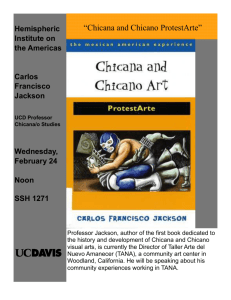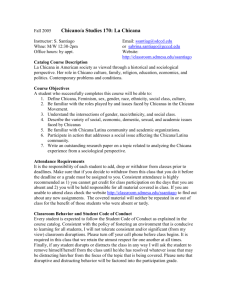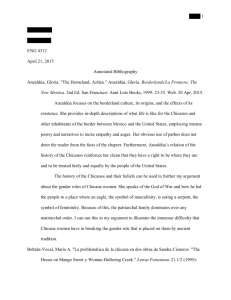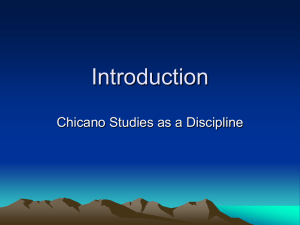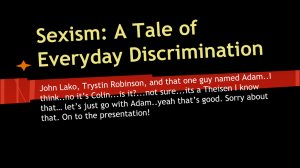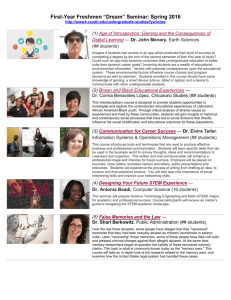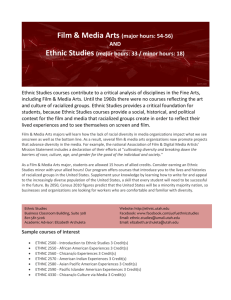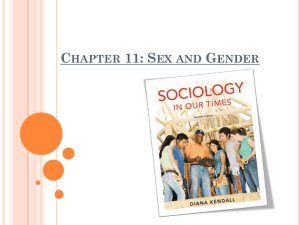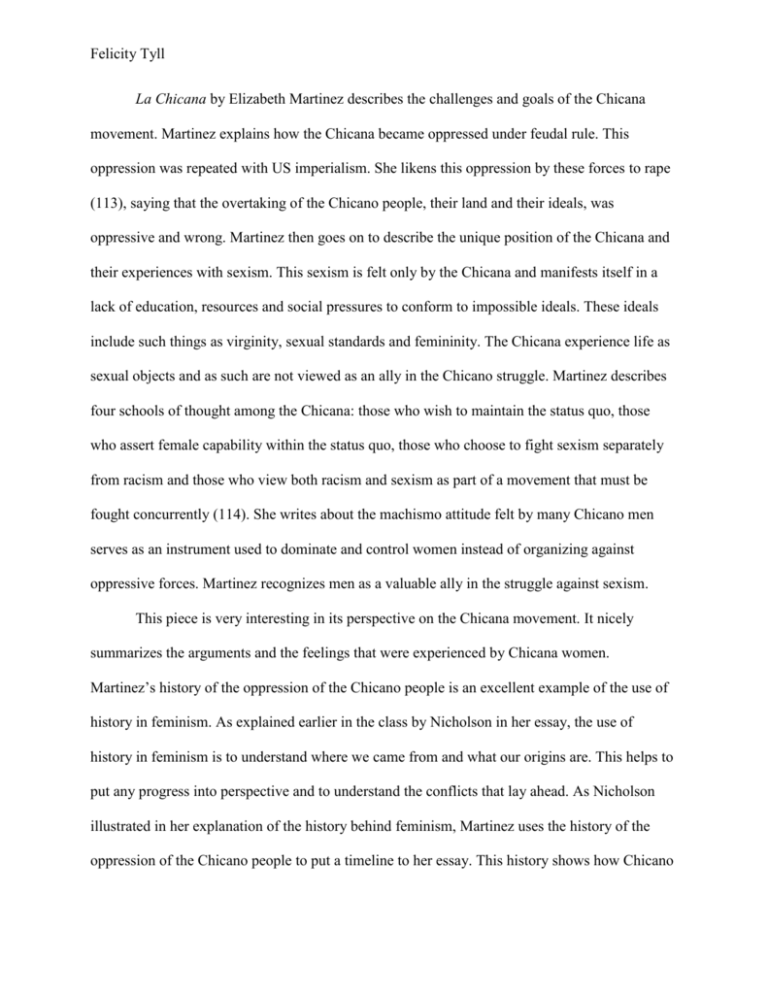
Felicity Tyll
La Chicana by Elizabeth Martinez describes the challenges and goals of the Chicana
movement. Martinez explains how the Chicana became oppressed under feudal rule. This
oppression was repeated with US imperialism. She likens this oppression by these forces to rape
(113), saying that the overtaking of the Chicano people, their land and their ideals, was
oppressive and wrong. Martinez then goes on to describe the unique position of the Chicana and
their experiences with sexism. This sexism is felt only by the Chicana and manifests itself in a
lack of education, resources and social pressures to conform to impossible ideals. These ideals
include such things as virginity, sexual standards and femininity. The Chicana experience life as
sexual objects and as such are not viewed as an ally in the Chicano struggle. Martinez describes
four schools of thought among the Chicana: those who wish to maintain the status quo, those
who assert female capability within the status quo, those who choose to fight sexism separately
from racism and those who view both racism and sexism as part of a movement that must be
fought concurrently (114). She writes about the machismo attitude felt by many Chicano men
serves as an instrument used to dominate and control women instead of organizing against
oppressive forces. Martinez recognizes men as a valuable ally in the struggle against sexism.
This piece is very interesting in its perspective on the Chicana movement. It nicely
summarizes the arguments and the feelings that were experienced by Chicana women.
Martinez’s history of the oppression of the Chicano people is an excellent example of the use of
history in feminism. As explained earlier in the class by Nicholson in her essay, the use of
history in feminism is to understand where we came from and what our origins are. This helps to
put any progress into perspective and to understand the conflicts that lay ahead. As Nicholson
illustrated in her explanation of the history behind feminism, Martinez uses the history of the
oppression of the Chicano people to put a timeline to her essay. This history shows how Chicano
Felicity Tyll
oppression first came about and how Chicana in particular have fallen victim. Later in the essay
Martinez puts racism and sexism into a global context. She explains how historically
hypermasculine attitudes have been promoted by oppressors as a way to deflect revolution. If
men feel that they can dominate and control women, they will not feel their own oppression as
strongly. This context helps to demonstrate how intertwined racism and sexism are and how
crucial it is to fight one alongside the other.
Martinez raises an interesting point concerning how classism and sexism intertwine as
well. She writes about how women often feel pressured to conform to certain standards of living
by buying products. This standard of living is produced by sexist standards of femininity. Just as
women today face unrealistic beauty standards and buy products to achieve them, the same was
true of Chicana women. Women felt that they needed to constantly buy beauty products in order
to achieve the unrealistic cultural ideal. This ideal was driven by competition between Chicana
women. This competition began in high school when women competed for male attention and
continued on through adulthood. It is interesting to observe how little this has changed. Even
today women of all races and classes are driven by the need to compete with each other. This is a
dividing force rather than the uniting force that is needed to defeat sexism and racism.
Fortunately there is optimism at the end of Martinez’s piece. She writes about a new
generation of Chicana men and women who work together to end oppressive forces. The men
recognize the role of the machismo attitude in promoting racism. The young women are
educating themselves and becoming aware of their role in the movement. Martinez’s article
explains well the origins of the Chicana movement and what still has to be done.

